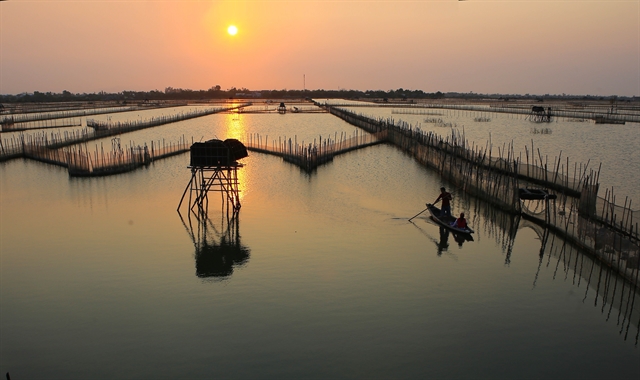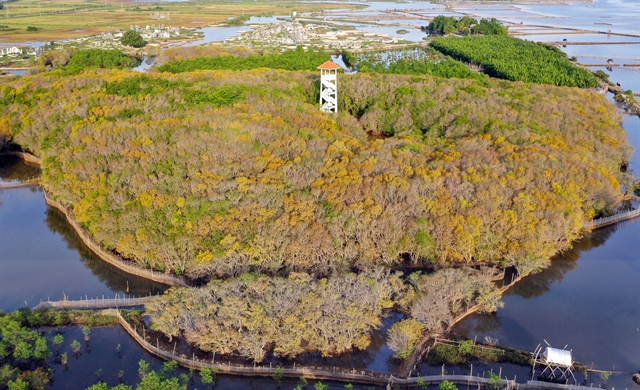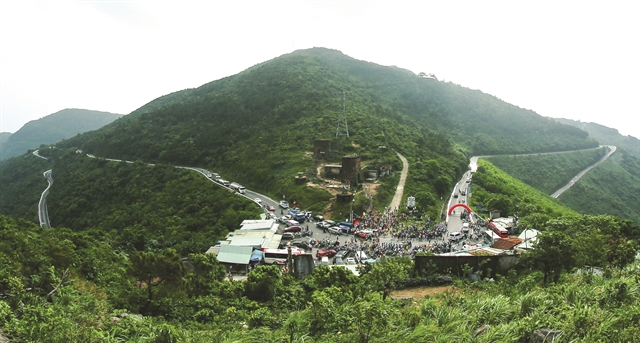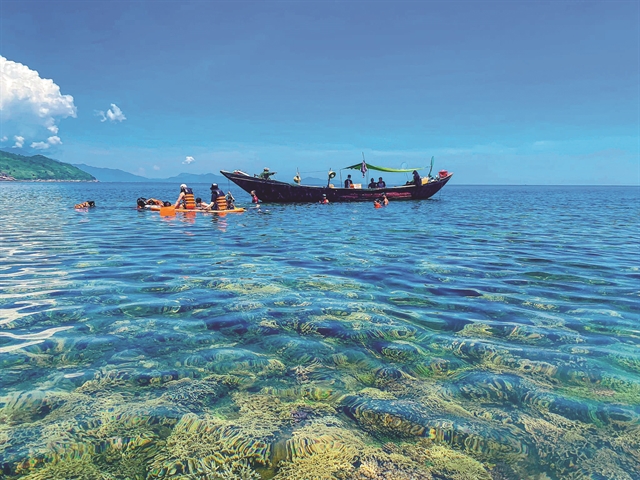The central province of Thừa Thiên-Huế should move toward combining ecotourism and geotourism to boost the local economy, specialists have suggested via a recent study on geological heritage in the region.

Đầm Chuồn Lagoon, a community-based ecotourism site and part of the Tam Giang – Cầu Hai wetland nature reserve, which was established by the Ministry of Natural Resources and the Thừa Thiên-Huế People's Committee in early June. VNA/VNS Photo Hồ Cầu
Ecotourism and geotourism have common features, which are community involvement, awareness of protecting the environment, geological heritage, preserving indigenous culture, and bringing economic benefits to the local communities,” says Project Head, Dr Vũ Quang Lân, from the Northern Federation of Geological Maps.
“Therefore, Thừa Thiên-Huế Province should build plans to develop eco-tourism combined with geological tourism to thoroughly promote the Tam Giang – Bạch Mã area in particular, and of the province in general.”
The Research on Geological Heritages as a Scientific Basis for the Establishment of a Global Geopark in Tam Giang – Bạch Mã Area study, carried out between 2018 and 2020, identifies and classifies 115 geological heritage sites. These include five international-level, 41 national-level, and 69 local-level heritage sites.

The specialists who reviewed Tam Giang–Bạch Mã area's long history of geological development and its complex geological structure noted that the way the geography of the area has formed is relatively unique and distinctive compared to other coastal areas in Việt Nam. VNA/VNS Photo Hồ Cầu
Dr Lân believes one way to develop ecotourism and geotourism together in Thừa Thiên-Huế is to further develop ecotourism in Bạch Mã National Park. This would include enabling tourists to learn more about the regional ecosystem, photograph the flora and fauna, and indulge in a touch of bird watching.
This could also include tours that incorporate learning about the geological development of Bạch Mã Mountain, including the formation and development of the levelled surface on the top of the mountain; the regionally renowned landscapes, like Đỗ Quyên Waterfall and Ngũ Hồ (five lakes); or the more than 400-million-year-old slate at the top of Đỗ Quyên Waterfall.
Tam Giang – Cầu Hai lagoon has also been suggested as a future sight for the development of geotourism. It has been suggested that tours are designed in which tourists can learn more about the mangrove forests and lagoon ecosystem, watch the sunrise and/or sunset over the lagoon, and also develop an understanding of the development of the lagoon.
This would include the way the Thuận An, Tư Hiền and Hòa Duân estuaries have changed. This could also incorporate discussion around the architecture of the Mỹ Khánh ancient tower that belongs to the Champa culture.
Simultaneously, Thừa Thiên-Huế could also develop ecotourism in rural areas by offering field trips to the craft villages and farms. This could be combined with studying the formation of the Thừa Thiên-Huế plain and the relationship between geological and cultural heritages in the lands of the ancient capital.

Located in Bạch Mã National Park, Đỗ Quyên Waterfall is seen as a natural masterpiece. Photo hoileonui.com
The study recommends establishing a Tam Giang – Bạch Mã national geopark with a focus on becoming an international geopark in the future. This is expected to become the foundation of local tourism, socio-economic development, and long-term conservation of natural heritage values, biodiversity, and culture for future generations in the region.
Prof Trần Văn Trị, from the General Department of Geology, says the results of the project will form a foundation for state management agencies to protect important heritage sites and promptly prevent human activities from damaging them.
“These results will assist relevant organisations in Thừa Thiên-Huế, and neighbouring provinces, to conduct strategic planning for socio-economic development, particularly in the fields of tourism services, geological tourism, ecotourism, and community-based tourism.
“Local museums and related agencies of Thừa Thiên-Huế and neighbouring provinces will be encouraged to improve their understanding of geological heritage, participate in heritage research, conservation, management and exploitation,” he adds.
The professor also says that the results of the research conducted on the geological heritage of the Tam Giang – Bạch Mã area will help to raise local people’s awareness, thereby making a positive and practical contribution to the conservation of heritage in general.
The specialists, that reviewed the area's long history of geological development and its complex geological structure, noted that the way the geography of the area has formed is relatively unique and distinctive compared to other coastal areas in Việt Nam.

An aerial view of the Hải Vân Pass, which was named among the 10 most beautiful drives in the world by US magazine Travel+Leisure in April. VNA/VNS Photo Trần Lê Lâm
Tam Giang – Bạch Mã also has incredible biodiversity. With a broad range of different species and ecosystems, such as tropical evergreen forests, lagoons, sand dunes, and intertidal and coastal wetland ecosystems.
The area, however, is not only geographically important, but also has a long history of cultural significance.
Tam Giang – Bạch Mã, for example, has seven world heritage listings recognised by UNESCO. These include the complex of Huế Monuments, the woodblocks of the Nguyễn dynasty, and the royal court music of Huế.
The study also notes that provincial cultural heritage should not only gather the characteristics and quintessence of the national culture but also showcase the original features and culture of the region.
The study highlights a potential ecotourism route that would bring together geological tourism sites throughout the province and connect the Lăng Cô – Hải Vân – Sơn Chà Island.
Participants would enjoy the scenery of Lăng Cô Beach, Lập An Lagoon, and particularly, Hải Vân Pass which has been named among the 10 most beautiful drives in the world by US magazine Travel+Leisure.
These tours would enable tourists to learn about the history of Hải Vân Gate which has been dubbed “the most marvellous wonder” and to snorkel the coral reefs surrounding Sơn Chà Island. They would learn about the history of the formation and development of Lập An Lagoon and the massive sand dyke beside it.

Tourists dive to contemplate the coral reefs surrounding Sơn Chà Island, located around one kilometre from the Hải Vân Pass. Photo daosoncha Facebook
Aside from identifying areas for tourism development, the project has also helped shed light on the history of coastal delta development in the central province over the past 10,000 years. In particular, sea level changes and the size of an ancient bay that developed between 10,000 and 4,000 years ago in Huế Delta that was gradually filled with materials brought by the river from then to the present day.
Vietnamese geoscientists are currently defining a set of geo-heritage values as well as identifying a national network of geoparks to conserve and promote local heritage that can be used for sustainable economic and social development.
The Tam Giang – Bạch Mã area covers a total area of about 1,600 square kilometres, including Huế City, Phú Vang District, Quảng Điền District and parts of Phú Lộc, Hương Thủy, Nam Đông, Phong Điền Districts, and Hương Trà Town.
Located within this area is the ancient royal capital of Huế which was recognised by UNESCO as a World Heritage Site on the 11th of December 1993.
The city, is abundant with unique landscapes and buildings like the Hương (Perfume) River, Ngự Mountain or Thiên Mụ Pagoda. As a result, it has become the inspiration for numerous poems and artworks.
By Trần Diệu Thúy - Lương Hương